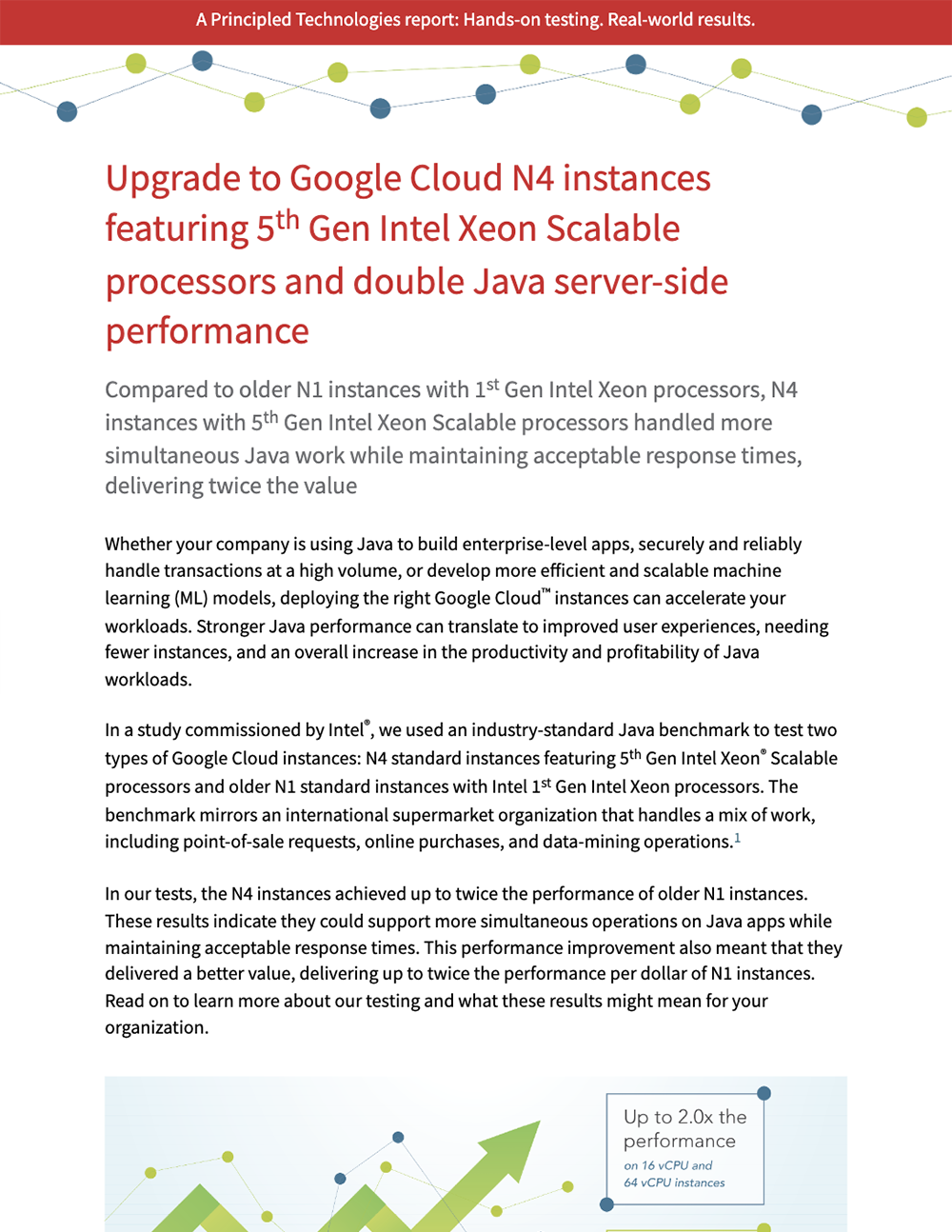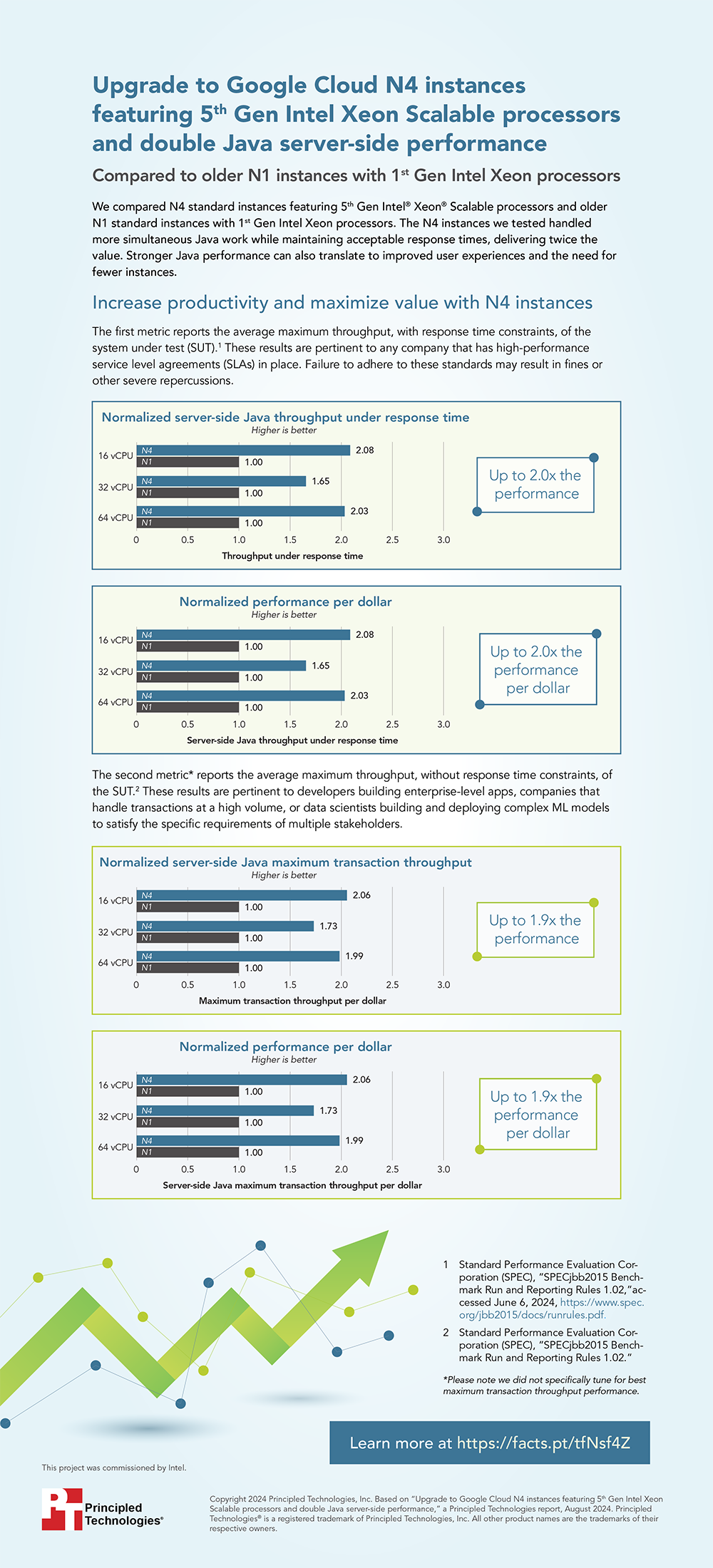
For many businesses, cloud-based computing and Java-based applications have proven to be a winning combination. By merging the flexibility of the cloud with the multiplatform adaptability of Java tools, it’s possible to build everything from enterprise-level software to high-traffic online retail portals to scalable machine learning models. Whether a Java workload is serving a corporate intranet or a public-facing portal or mobile app, responsive performance is critical for success. As administrators think about ways to meet demand and deliver quality end-user experiences, it’s tempting to simply add more of the cloud instances they already use. But that approach could cause them to miss the performance boosts and bottom-line value they could gain by upgrading to the latest-generation platforms.
To show how upgrading to the latest-gen cloud platforms could improve server-side Java workload performance, we used an industry-standard benchmark to test two Google Cloud instance types: N4 standard instances that featured 5th Gen Intel Xeon Scalable processors, and older N1 standard instances equipped with 1st Gen Intel Xeon processors. We set up both instances to be as similar as possible and evaluated them in two different use cases: the best transaction throughput with limited response times (to show how well they work for businesses that follow service level agreements, or SLAs) and the highest transaction throughput with no response time limits. We also calculated a performance-to-cost ratio for each instance to find out which setup may offer better potential value.
We found that the N4 instances significantly outperformed the older N1 instances, delivering up to 2.0x the server-side Java throughput performance. From a value standpoint, the N4 instances provided up to twice the performance per dollar of the older instances. Our results show that with the ability to process more transactions on each Google Cloud N4 instance with 5th Gen Intel Xeon Scalable processors, organizations could potentially serve more customers, deliver a better user experience during spikes in demand, and save money by doing the same amount of work with a smaller cloud footprint.
To read more about our Google Cloud instance comparison tests, check out the report and infographic below.
Principled Technologies is more than a name: Those two words power all we do. Our principles are our north star, determining the way we work with you, treat our staff, and run our business. And in every area, technologies drive our business, inspire us to innovate, and remind us that new approaches are always possible.







